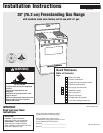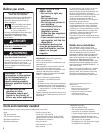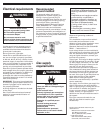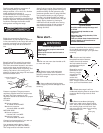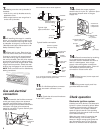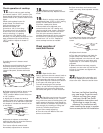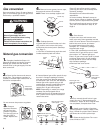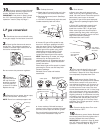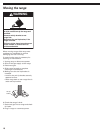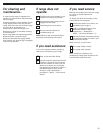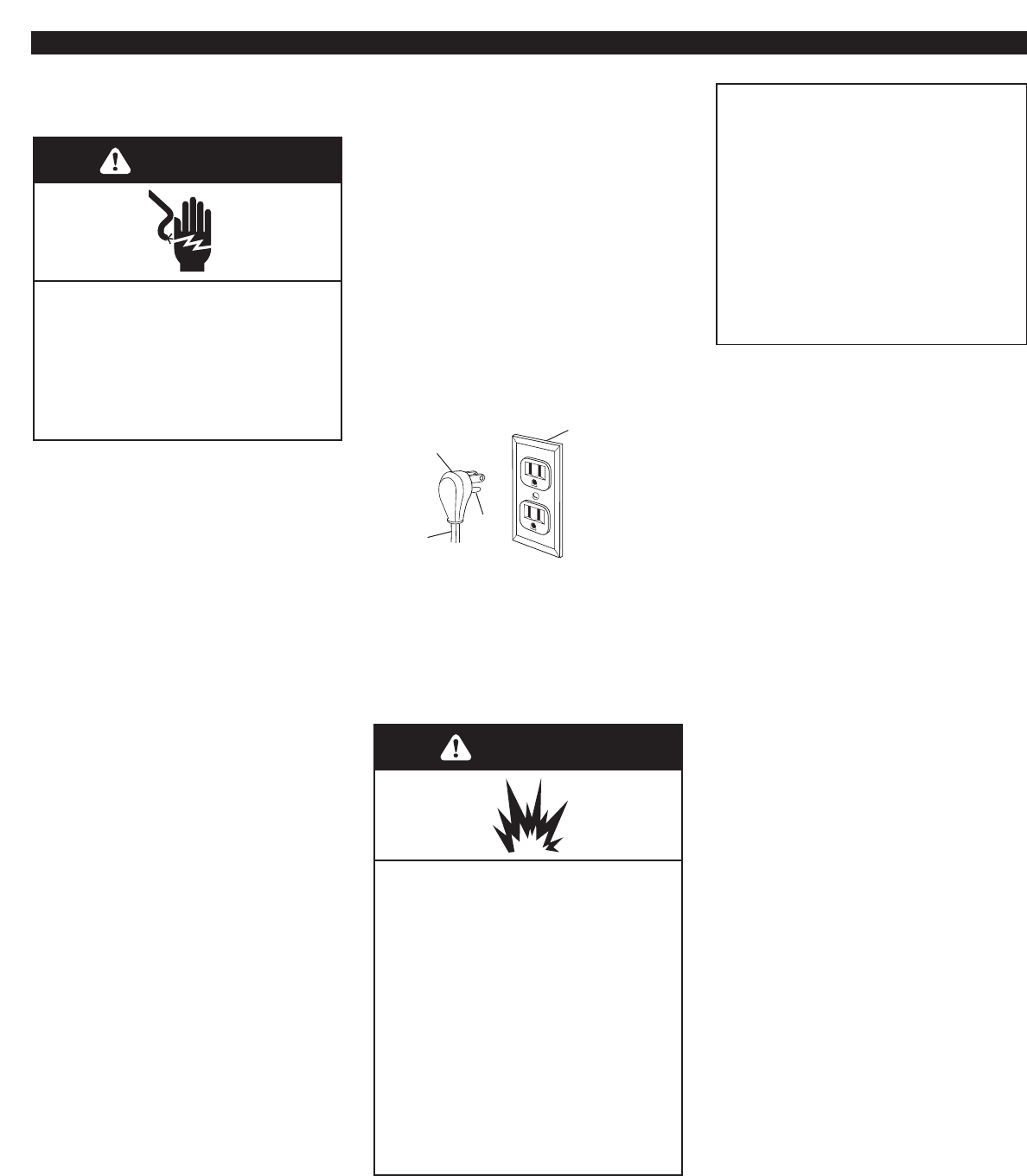
4
Electrical requirements
Gas supply
requirements
Recommended
ground method
For personal safety, this range is
equipped with a power supply cord
having a 3 prong ground plug. To
minimize possible shock hazard, the cord
must be plugged into a mating 3 prong,
ground-type outlet, grounded in
accordance with the National Electrical
Code, ANSI/NFPA 70 — latest edition*
and all local codes and ordinances.
If a mating outlet is not available, it is the
personal responsibility and obligation of
the customer to have a properly polarized
and grounded, 3 prong outlet installed by
a qualified electrician.
If codes permit and a separate ground
wire is used, it is recommended that a
qualified electrician determine that the
ground path is adequate.
Do not ground to a gas pipe.
Check with a qualified electrician if you
are not sure range is properly grounded.
A 120-volt, 60-Hz, AC-only, 10 amp, fused
electrical supply is required. A time-delay
fuse or circuit breaker is recommended. It
is recommended that a separate circuit
serving only this appliance be provided.
Electronic ignition systems operate within
wide voltage limits, but proper grounding
and polarity are necessary. In addition to
checking that the outlet is correctly
grounded, the outlet must be checked by
a qualified electrician to see if it is wired
with correct polarity.
IMPORTANT: This range is equipped with
an electronic ignition system that will not
operate if plugged into an outlet that is
not properly polarized.
A wiring diagram is included on the back
of the range.
See “Cutout dimensions/requirements”
section for recommended location of
electrical outlet.
3 prong
polarized
ground-type
outlet
3 prong ground
plug
ground
prong
power
supply
cord
Observe all governing codes and
ordinances.
This installation must conform with all
local codes and ordinances. In the
absence of local codes, installation must
conform with American National
Standard, National Fuel Gas Code ANSI
Z223.1 — latest edition**.
Input ratings shown on the model/serial
rating plate are for elevations up to 2,000
feet. For assistance when installing the
range at higher elevations, contact your
local service company.
Type of gas: This range is design-certified
by CSA International for use with L.P. gas
or, after proper conversion, for use with
Natural gas. This range is factory set for
use with L.P. gas. Gas conversion
instructions are provided on pages 8–9.
The model/serial rating plate located on
the frame behind the broiler drawer has
information on the type of gas that can
be used. If the type of gas listed does not
agree with the type of gas available,
check with the local gas supplier.
Conversion must be done by a qualified
service technician.
Gas supply line: Provide a gas supply line
of 3/4" rigid pipe to the range location.
With L.P. gas, piping or tubing size can be
1/2" minimum. A smaller size pipe on
longer runs may result in insufficient gas
supply. Usually, L.P. gas suppliers
determine the size and materials used in
the system.
Pipe-joint compounds made for use
with L.P. gas must be used on pipe
threads only.
Copies of the standards listed may be
obtained from:
*National Fire Protection Association
One Batterymarch Park
Quincy, Massachusetts, 02269
**CSA International
8501 East Pleasant Valley Road
Cleveland, Ohio 44131-5575
In the State of Massachusetts, the
following installation instructions
apply:
• Installations and repairs must be
performed by a qualified or
licensed contractor, plumber, or
gasfitter qualified or licensed by
the State of Massachusetts.
• If using a ball valve, it shall be a
T-handle type.
• A flexible gas connector, when
used, must not exceed 3 feet.
Electrical Shock Hazard
Plug into a grounded 3 prong outlet.
Do not remove ground prong.
Do not use an adapter.
Do not use an extension cord.
Failure to follow these instructions can
result in death, fire, or electrical shock.
WARNING
WARNING
Explosion Hazard
Use a new AGA or CSA approved gas
supply line.
Install a shutoff valve.
Securely tighten all gas connections.
If connected to LP, have a qualified
person make sure gas pressure does
not exceed 14" water column.
Examples of a qualified person
include:
licensed heating personnel,
authorized gas company
personnel, and
authorized service personnel.
Failure to do so can result in death,
explosion, or fire.



